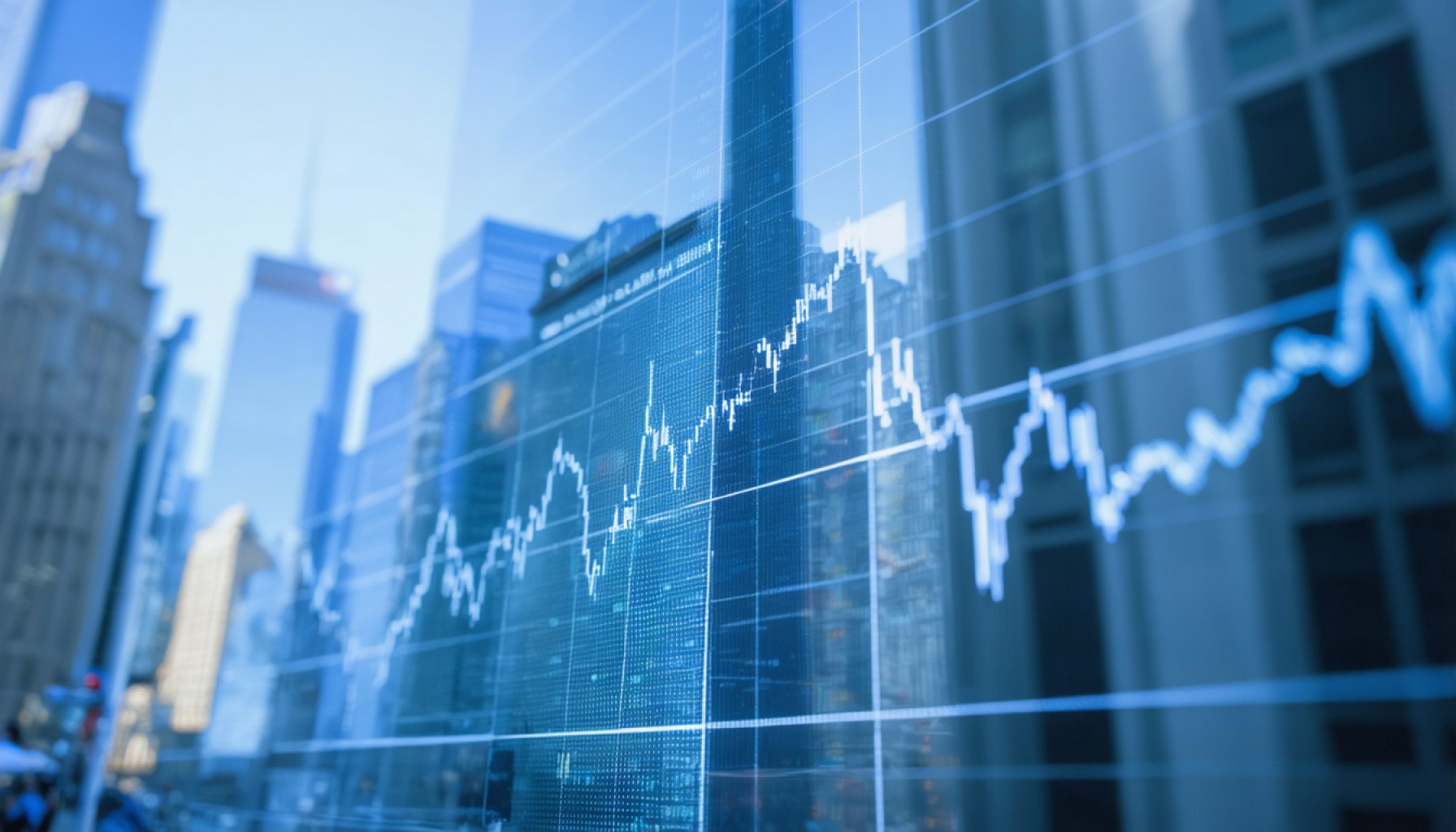- The Volatility Index (VIX) serves as a critical gauge of market sentiment, indicating potential stock market volatility.
- The VIX measures volatility in S&P 500 stock options, offering a real-time snapshot of investor anxiety.
- Recently, the VIX spiked to 60.13, marking its highest point since the COVID-19 pandemic, reflecting heightened economic uncertainty.
- This surge highlights global economic tensions and policy shifts, such as tariffs, impacting investor sentiment.
- A high VIX value traditionally warns of turbulent markets, urging investors to prepare or seek safer investments.
- The VIX aids investors in crafting strategies for volatile environments, emphasizing adaptability and vigilance.
- Monitoring the VIX is essential in today’s financial landscape, enabling investors to anticipate market changes and protect assets.
Within the labyrinthine corridors of global finance, one subtle indicator whispers the collective anxiety of investors: the Volatility Index, or VIX, a critical measure that encapsulates the market’s emotional temperature. Traditionally a beacon during financial turmoil, the VIX has recently drawn fresh eyes and spiraling attention due to its dramatic fluctuations.
In essence, the VIX is the financial world’s seismograph, registering tremors of uncertainty and predicting the stock market’s turbulent swings in the face of economic stress. It does so by meticulously charting the volatility of S&P 500 stock options—agreements granting buyers the right to purchase or sell stocks at predetermined prices, by set dates. Through this lens, the VIX presents a distilled snapshot, updated continuously, that speaks volumes about current market sentiment.
Heightening the intrigue, the index spiked to an unsettling 60.13 on April 7, the highest it had soared since the onset of the COVID-19 pandemic. Such a peak is more than mere numbers; it signifies the sea of emotions swirling in the investment community, stirred recently by global economic tensions and policy shifts, including tariffs.
The recent surge pinpoints a broader narrative of uncertainty. Historically, the economy, much like a skilled tightrope walker, has balanced amidst myriad external pressures, and the VIX has served as its alert companion, warning of slips with unprecedented precision. A rise in the index typically heralds choppy seas ahead, urging investors to brace for impact or to seek shelter in safer harbors.
Yet, understanding the VIX goes beyond mere caution; it acts as a guide, helping investors craft strategies tailored for volatile times, ensuring they remain nimble and informed. It’s a call for vigilance, urging all— from seasoned financiers to nascent stockholders— to listen and adapt to the market’s unspoken signals.
In today’s volatile financial climate, the takeaway is clear: paying heed to silent indices like the VIX is no longer just a strategy; it’s a necessity. Much like watching the sky for storm clouds, tracking the VIX empowers investors to anticipate change, safeguard their assets, and weather any economic storm with resolve and adaptability.
Uncovering the VIX: The Investor’s Compass in Troubled Waters
Understanding the VIX
The Volatility Index (VIX) dances at the heart of the financial world, silently signaling the fears and expectations swaying global markets. Developed by the Chicago Board Options Exchange (CBOE), the VIX reflects the anticipated volatility in the S&P 500 index for the next 30 days. It’s often referred to as the “fear gauge” because a rising VIX suggests growing market anxiety.
Real-World Use Cases and Strategies
1. Diversification and Hedging: Investors often use VIX derivatives, such as futures and options, as hedging tools. When the market shows signs of volatility, these instruments can protect portfolios against sudden dips.
2. Risk Management: Financial planners and portfolio managers monitor VIX levels to adjust asset allocations, favoring bonds and other low-risk assets during times of high VIX readings.
3. Market Timing: Some traders attempt to time the market by buying into lower-risk assets when the VIX rises, returning to equities as the VIX falls.
How-To: Respond to VIX Surges
– Step 1: Monitor VIX trends regularly through financial platforms like Bloomberg or Yahoo Finance.
– Step 2: Assess your portfolio’s exposure to market swings. Consider reducing exposure to high-volatility stocks while the VIX is high.
– Step 3: Explore diversifying into sectors traditionally deemed ‘safer,’ such as utilities or consumer staples.
– Step 4: Look into acquiring protective options that increase in value during high volatility.
Market Forecasts & Trends
As global economies grapple with inflation and geopolitical tensions, volatility has become a constant companion. Experts predict that the VIX will continue to experience rapid movements, driven by ongoing fiscal policies and international developments, such as shifts in trade agreements and currencies (Source: [CNBC](https://www.cnbc.com)).
Controversies & Limitations
While the VIX is a valuable tool, it’s not without controversy. Critics argue that it can sometimes reflect exaggerated fears, leading to over-trading. Furthermore, the index primarily focuses on short-term expectations and may not accurately capture long-term market potentials (Source: [Investopedia](https://www.investopedia.com)).
Pros & Cons Overview
– Pros:
– Provides a snapshot of market sentiment.
– Helps in predicting market volatility.
– Useful for risk management and strategy development.
– Cons:
– May cause panic trading.
– Limited predictability for long-term trends.
– Reliant on S&P 500 options market dynamics.
Conclusion: Actionable Tips for Investors
– Incorporate VIX Tracking: Use the VIX as part of your comprehensive market research. Set alerts for significant movements that could affect your investment strategy.
– Stay Diversified: Mitigate the impact of market volatility by maintaining a diversified portfolio across various asset classes.
– Educate Yourself: Understanding the mechanisms of financial derivatives tied to the VIX can offer avenues for hedging or profiting in volatile markets.
Staying informed and responsive to the VIX’s subtle cues can be a crucial aspect of a well-rounded investment strategy. Always pair VIX insights with broader economic analysis for the most effective investment planning.
For more insights into financial markets, visit the [CBOE Global Markets](https://www.cboe.com).
